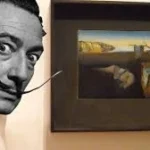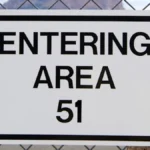
The Cairo Citadel is situated on Mokattam Hill in Cairo, Egypt. Initially it was worked as an illustrious home and furthermore as military sleeping shelter by the ruler Saladin. He concluded that Cairo should have been ready to shield itself from any danger. When it was finished in 1182, Saladin was not, at this point the leader of Egypt. At the point when it was finished, Al Malek El Kamel was the leader of Egypt and he was the main ruler to live in it. During the 1860s, Egypt’s ruler Khedive Ismail moved out of the Citadel of Cairo into his own new palace. From that point on the Citadel of Cairo was not, at this point utilized as the seat of government.
The Citadel of Cairo was the home for the rulers of Egypt for 700 years.
The Cairo Citadel was originally built in 1176. That means it’s medieval because the medieval period ran from the 5th to the 15th century.
The Citadel is a medieval Islamic fortification. It was built during the Ayyubid Dynasty.
Since 1976, it has been protected as part of the UNESCO World Heritage Site Historic Cairo. UNESCO is a special department of the United Nations, which promotes world peace and cultural respect by protecting places of historical importance.
The Citadel was built on hill to make it easy to see attackers and to make it more difficult for them to attack.
The Cairo Citadel is a religious place for Muslims, the people who belong to the Islamic faith.
Construction of the Citadel began in 1176-1183 and it was completed in 1184.
It contains mosques, which are places of worship – like churches are for Christians.
The Citadel was supposed to be the centerpiece of a wall that was to be built to protect Cairo and Fustat from the Crusaders.
In fact, there are three mosques inside: Alabaster Mosque; Al-Nasir Muhammad Mosque; and the Mosque of Sulayman Pasha. Cairo was once the centre of the Islamic world, meaning it was the most important city for Muslims everywhere.
Saladin was the ruler of Egypt when construction of the Citadel began but when it was finished he was no longer king. The first king to live in the Citadel was Al Malek El Kamel.
The Citadel was made strong so that it could be used to defend the city against invaders.
The wall that Saladin had begun to build to protect Cairo and Fustat was still under construction after he died. It was still being built in 1238, many years after his death.
It was fortified between 1176 and 1183 to protect it from the Crusaders.
The Citadel was enlarged in the 13th to 14th century.
The Citadel’s main defences were its location on top of a hill, stone towers and the great wall around it.
The Cairo Citadel is considered to be one the most elegant of the fortresses that were built during the middle ages.
During World War II, the British army were based there, and today, Egyptian soldiers still use it.
Saladin also had a well for water built inside the Citadel. It is called the Well of Joseph and still can be seen today.
The Citadel actually joined the ancient city of Cairo with a nearby city called Ayyubid to protect both places from the Crusaders.
It was approximately 280 feet deep. When the well could not supply enough water for all the people and humans living there, they brought water from the Nile to keep an adequate supply.
The Citadel is sometimes referred to as Muhammad Ali Citadel.
Cairo was invaded by the French in 1798. The Citadel was important in helping to protect the city but Napoleon Bonaparte’s army eventually took control.
Today, visitors to Cairo Citadel can explore the three museums inside.
The Cairo Citadel is also called the ‘Mohamed Ali Citadel’. The reason for this is because the Mosque of Mohamed Ali is there. The Mosque was built in memory of Muhammad’s oldest son Tusun Pasha who died in 1816.
The Bijou Palace was originally built by Muhammad Ali Pasha. Inside is his official audience hall, the place where he would greet his guests. It contains his throne and a huge chandelier.
There are three mosques at the Citadel of Cairo: Mosque of Al-Nasir Muhammad, Mosque of Suleiman Pasha and the Mosque of Mohamed Ali.
In the Carriage Museum, you can see a collection of amazing royal carriages. There is also the Egyptian Military Museum, which has only been inside the Citadel since 1949.
The Citadel of Cairo is considered to be one of the ‘greatest monuments of medieval warfare’.
It has been said that the Cairo Citadel has the best views in the city. From the terraces inside, you can see superb Cairo views. On a clear day, you can even see the Pyramids of Giza in the distance.
From the 19th century on, the Cairo Citadel underwent six major reconstruction projects.
Despite the fortifications, in 1798 the Citadel was controlled by the French. Emperor Napoleon Bonaparte’s armies invaded Egypt and Syria to protect their ability to trade in the region. This led to the discovery of the famous Rosetta Stone and the birth of egyptology (the study of Ancient Egypt).
Of all the non- pharaoh-related monuments in Egypt, the Cairo Citadel is one of the most popular.
Despite the fortifications, in 1798 the Citadel was controlled by the French. Emperor Napoleon Bonaparte’s armies invaded Egypt and Syria to protect their ability to trade in the region. This led to the discovery of the famous Rosetta Stone and the birth of egyptology (the study of Ancient Egypt).
Today the Cairo Citadel is a historic site. Its mosques and museums are historically preserved for future generations to be able to enjoy.









